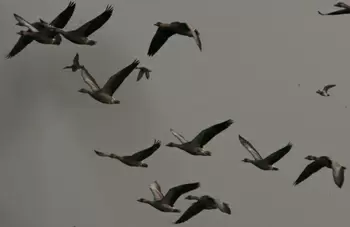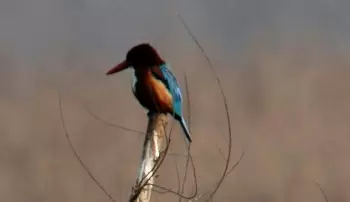You may hesitate to visit Kashmir, but the valley is receiving lakhs of winged visitors
29-November-2011
Vol 2 | Issue 47
This premier wetland in Srinagar is in the prime of its beauty these days -- it is host to more than 600,000 migratory birds, with the numbers swelling with each passing day.
Each year, thousands of migratory birds leave their summer homes in Russian Siberia, the Philippines, eastern Europe, China and Japan, flying thousands of miles by navigating their long arduous journeys through instinct, to reach their winter homes in the valley.
 |
|
Migratory birds at the Hokarsar Bird Reserve in Kashmir are a sight to behold as the winter sets in. (Photos: Raashid Bhat)
|
"More than 600,000 migratory birds, including greylag geese, mallards, gadwalls, garganeys, pochards, grebes, wigeons, shovellers, teals, coots and pintails, have reached this bird reserve.
"We have around 4,000-5,000 greylag geese in the reserve this time and more are arriving each day," Wildlife Warden (Wetlands) Rouf Zargar said, adding his department has formed special anti-poaching patrols to check illegal hunting of the birds outside the reserve.
Bird hunting was banned in Jammu and Kashmir in 2001.
"We have seized many weapons of poachers who have been produced before the courts for the offence," the warden said.
Encouragingly, some migratory bird species like the purple moorhens have started living inside this bird reserve as residents.
"We have around 50,000 purple moorhens in the reserve this time. They lay eggs inside and bring up their chicks," said Muhammad Ramzan, a forester at the reserve.
"Initially, they used to be migratory in nature, but for the last six years they have changed their habits and live as resident birds here."
Ramzan also spotted scores of cormorants.
"The cormorants are basically birds of passage. They live here for a short time after their arrival. They will soon fly out to the Indian plains where they spend the winter months.
"They will again spend a part of their time in this reserve in the spring before flying out to their summer homes," said Ramzan.
"We also host Ruddy Shelducks in the reserve. The migratory bird is known for its capacity to fly high," said Zargar.
 |
"All the migratory birds leave the reserve in the evenings for feeding in the Wullar Lake and other water bodies, but with arithmetical accuracy, they return in the morning to spend the day in the safety of the reserve."
"An encouraging development during the last some years has been that some of the mallards that came here earlier only during the winter months to ward off the extreme winters of their summer homes have also started staying back to breed inside the reserve," said the warden.
Located just 14 km from city centre Lal Chowk on the Srinagar-Muzaffarabad highway, many residential areas have come up around the reserve.
"This is a potential danger to the delicate eco-system of the reserve.
"Although the boundaries of the reserve are well marked, yet the discharge of effluents from these habitations, the noise pollution and the unavoidable human interference are worrisome," the warden maintained. - IANS














